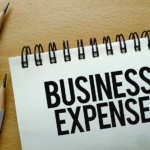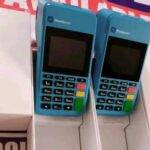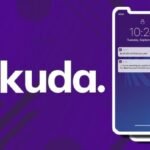Moniepoint and Kuda offer a range of features and benefits that make them attractive options for those looking to manage their finances digitally. Their unique differences in market valuation, provision of financial management tools, fees, and security assist users in making choices that suit their needs.
Nigeria has seen an increase in the number of digital banks, which provide financial advantages like better terms, no fees, and stress-free online banking. These digital banks aim to alleviate stress by offering services that let customers do various transactions from the comfort of their homes.
For tech enthusiasts, corporate titans, entrepreneurs, and even students—who are not excluded—it has become the new normal.
With so many options available, choosing the right mobile payment platform for your needs can be challenging. That’s where we come in! This article will examine Moniepoint and Kuda, two popular financial services that are shaking up the industry. By the end, you’ll clearly understand which one might better suit you.
READ ALSO: Moniepoint Net Worth: How Much Is Moniepoint Worth
Moniepoint vs Kuda

Let’s start by getting to know Moniepoint. Moniepoint service has been making waves with its user-friendly interface and range of features. Whether you’re looking to send money, pay bills, or top up your phone credit, Moniepoint has you covered. Plus, with its extensive network of agents nationwide, you can easily access your funds whenever you need them.
Now, let’s turn our attention to Kuda, also known as the “Bank of the Free”. This digital bank has been gaining traction for its innovative approach to banking. With no hidden fees and instant notifications for every transaction, Kuda is about transparency and convenience. Managing your finances is made simpler with loan services and other features like budgeting tools and savings objectives.
So, how do these two services stack up against each other? Let’s take a closer look at some key factors.
Fees:

First up, let’s talk about fees. When it comes to Moniepoint, the costs can vary depending on the type of transaction you’re making. While some services are free, others may incur a small charge.
On the other hand, Kuda prides itself on being fee-free, as the name implies, “free bank.” You won’t have to worry about any unexpected charges eating into your funds. With Kuda, you can receive a free debit card (visa card) and even get 25 free monthly transfers to other banks as a subscriber if you register with your Bank Verification Number (BVN). Extra transfers will only cost you 10 naira each.
Accessibility:

Both Moniepoint and Kuda offer mobile apps, making it easy to manage your finances on the go. However, Moniepoint also boasts a vast network of agents, allowing you to deposit and withdraw cash in person. This can be a game-changer for those who prefer the security of physical transactions.
Security:

Security is another crucial factor to consider when choosing a financial service. Moniepoint and Kuda take security seriously, implementing encryption and two-factor authentication to safeguard your data.
However, Kuda goes one step further by offering a virtual card feature, giving you extra protection when making online purchases.
Customer Service:

Customer service is also worth considering. Both mobile payment platforms offer support via phone, email, and social media, ensuring help is always close and allowing you to get assistance right when needed.
For questions and inquiries, contact moniepoint at support@moniepoint.com, customer service at info@moniepoint.com, Or call 0201 888 9990. Their expert staff is available 24/7 to provide solutions to anything you might need.
You can also contact Kuda Bank Customer Care by calling 0700022555832 between 8:00 a.m. and 5:00 p.m. on weekdays, emailing Kuda Customer Care at help@kuda.com, or visiting the Kuda Bank official website at https://www.kuda.com/ for more information.
Loan Services:

Moniepoint and Kuda extend their financial offerings beyond basic transactions to include loan services, catering to users needing financial assistance. Both platforms strive to meet users’ diverse financial needs while promoting responsible borrowing.
Moniepoint powers businesses by offering working capital loans to businesses and enterprises to help them finance additional inventory purchases and expand.
Similarly, Kuda also offers employees access to personal loans and quick and easy salary loans (collateral-free loans) at competitive rates.
Below are the following steps to apply for a loan from both banks.
Accessing Moniepoint loan:
Moniepoint does not require any paperwork or collateral to give out loans. To receive a loan for your business on moniepont:
- Confirm if you are qualified for a loan by logging into your dashboard to see what offers are available
- Select an offer that best matches your business needs
- Moniepoint reviews your choice and pays the money to your account in 1-2 business days
- You can now login to your business dashboard and select the Card option to obtain an expense card.
Accessing Kuda bank Loan:
Without paperwork or any embarrassment and with just 0.3% daily interest. Kuda Bank offers loans to people, known as Kuda Overdraft.
An overdraft is a credit facility that allows users to take out more money than they have in their accounts up to a certain amount.
This means the Kuda bank loan is a short-term loan offered to people(exclusively to Kuda account holders) to help them meet emergencies and needs. With Kuda overdraft, users can withdraw more than their account balances and repay when due.
This facility is directly linked to the customer’s account and is subject to the account’s terms and conditions. The Overdraft Facility specifies the facility type, tenor, disbursement date, mode of disbursement, maturity date, and interest rate.
The loan also comes with general terms and conditions, such as the advance of the Overdraft Facility, representations and warranties, Global Standing Instruction Mandate, miscellaneous variations to the Offer Letter, data privacy and disclosure of information, and governing law and jurisdiction.
With Kuda Bank, you have access to flexible and transparent loan options. To access the Kuda overdraft:
- Using the Kuda app, create an account, then upgrade it using your bank verification number (BVN) and a legitimate ID.
- Navigate to your borrowing account.
- Tap on “borrow” and select “Get your Overdraft.”
- Select your desired loan amount and click “done.”
- Verify your transaction PIN, face ID, or fingerprint.
- Click “okay” to complete the process.
Once you have completed the steps above, Kuda Bank will review your loan application. The approval process is incredibly fast, and you will receive a notification within a short period of approval.
Also, Kuda Bank issues collateral-free, quick, and easy salary loans at a competitive rate.
User Experience:
Moniepoint and Kuda pride themselves on their simple and intuitive interfaces, which provide customizable features and make it easy for even the least tech-savvy users to navigate.
Market Reputation:
Moniepoint has garnered praise for its reliability and extensive network. According to recent reports on Moniepoint Inc., in 2023, the company’s valuation soared, processing average monthly transactions valued at $12 billion as more businesses in Nigeria embrace digital payments, reflecting its growing influence in the payments landscape.
On the other hand, Kuda has also won over users with its transparent pricing and innovative features. In 2021, Kuda was listed as one of the seven WEF (World Economic Forum) African technology startups with a market valuation of $500 million and has raised over $90 million from investors, including Target Global and Valar Ventures.
Integration with Third-Party Services:
Both online payment platforms collaborate with third-party service providers to offer integrated solutions for users, including e-commerce platforms, utility bills and payment portals. Users can link their accounts to these platforms for seamless transactions and payments.
Financial Management Tools:
Moniepoint recognizes the importance of providing users with essential financial management tools to help them stay on top of their finances.
While the platform’s offerings may be more streamlined compared to some competitors, it still provides valuable features to assist users in managing their money effectively.
These tools include:
1. Transaction History:
Users can access a comprehensive transaction history within the Moniepoint mobile app, allowing them to view details of all their past transactions. This feature allows users to track their spending habits, monitor incoming and outgoing payments, and reconcile their accounts.
2. Account Statements:
Moniepoint gives users access to account statements, which offer a detailed overview of their account activity over a specific period.
Account statements help users track their financial progress, identify trends, and detect discrepancies or unauthorized transactions.
3. Balance Tracking:
The platform allows users to monitor their account balances in real-time, providing visibility into their available funds. Users can quickly check their account balance anytime, ensuring they have sufficient funds for their financial needs and helping them avoid overdrafts or insufficient funds situations.
While Moniepoint offers these essential financial management tools within its mobile app, the platform does not provide advanced budgeting or savings goal features.
On the other hand, Kuda provides robust financial management tools to help and empower users to track and take control of their spending, set savings goals, and manage their budgets effectively.
Kuda platform’s comprehensive suite of tools goes beyond basic transaction tracking to provide users with actionable insights and personalized recommendations, including features like expense categorization, goal setting, and personalized insights to help users make informed financial decisions.
Kuda tools include:
1. Expense Categorization:
Kuda automatically categorizes users’ expenses based on transaction data, allowing them to see where their money is being spent.
Categories may include groceries, transportation, dining out, entertainment, and more. This function helps customers have a comprehensive picture of their spending patterns and pinpoint areas where they can make savings.
2. Goal Setting:
Kuda enables users to set savings goals within the app, whether for a vacation, a new gadget, or an emergency fund. Users can specify the amount they want to save and the target date for achieving their goal.
The platform provides progress tracking and visual indicators to help users stay motivated and on track towards their goals.
3. Personalized Insights:
Kuda leverages transaction data to provide users with personalized insights and recommendations tailored to their financial behavior.
These insights may include suggestions for reducing discretionary spending, optimizing savings, or maximizing rewards.
By providing actionable recommendations, Kuda empowers users to make informed financial decisions that align with their goals and priorities.
While both payment platforms offer unique differences and similarities in their methods of operation, each Banking method provides several benefits. Let’s quickly examine the benefits of Moniepoint and Kuda banking methods.
Benefits of Moniepoint and Kuda Banking Methods
1. Convenience
With both payment platforms, users can conduct banking transactions through multiple channels, including in-person visits to agents or using the mobile app. This flexibility allows customers to choose the method that best suits their preferences and circumstances, enhancing overall convenience.
2. Face-to-Face Assistance
The presence of agents in local communities allows users to receive face-to-face assistance when needed. Users who prefer personalized support or have inquiries can visit nearby agents for assistance, fostering a sense of trust and reliability.
3. Cash Handling
Moniepoint’s banking methods cater to users who prefer cash transactions. With the option to deposit or withdraw cash through agents, users can easily manage their physical currency and access banking services without needing a traditional bank branch.
4. Ease of Onboarding
The simplicity of Moniepoint’s banking methods makes it easy for users to onboard and start using the platform. Whether users visit an agent for assistance or download the mobile app, the onboarding process is straightforward and accessible to users of all backgrounds.
5. Cost-Effectiveness
Kuda’s digital banking methods eliminate the need for physical branches, reducing overhead costs associated with maintaining brick-and-mortar locations. This cost-effectiveness allows Kuda to offer its users competitive pricing and value-added services.
6. 24/7 Accessibility
The availability of Kuda and Moniepoint banking services 24 hours a day, seven days a week, allows users to access their accounts and perform transactions at any time.
This round-the-clock accessibility caters to users with busy lifestyles or unconventional schedules, enhancing convenience and flexibility.
In conclusion, both Moniepoint and Kuda offer a range of features and benefits that make them attractive options for those looking to manage their finances digitally.
Moniepoint stands out for its vast network of agents and user-friendly interface, while Kuda shines with its fee-free model and innovative approach to banking.
Eventually, the right choice for you will depend on your individual needs and preferences. So, why not give them both a try and see which one works best for you? Thanks for reading!
















